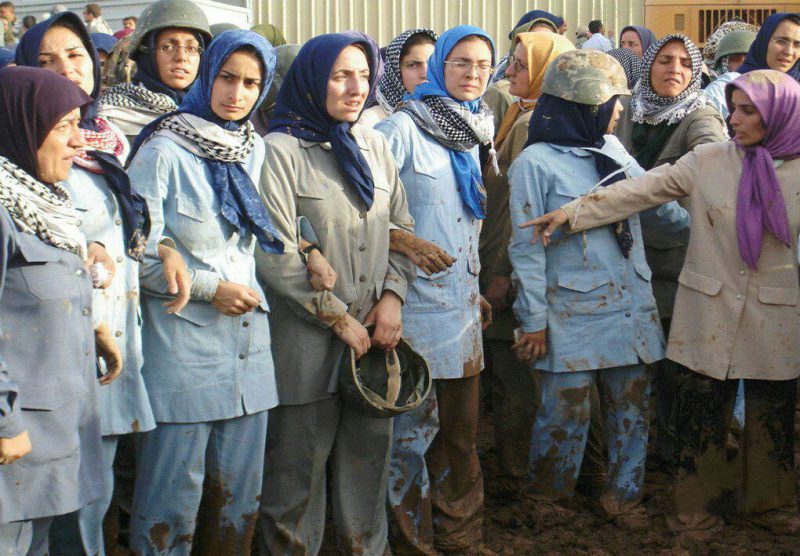Summary The Mojahedin Khalq Organization (MKO) is an armed Iranian opposition group that was formed in 1965. An urban guerrilla group fighting against the government of Mohammad Reza Pahlavi, it was an active participant in the anti-monarchy struggle that resulted in the 1979 Iranian revolution.
After the revolution, the MKO expanded its organizational infrastructure and recruited many new members. However it was excluded from participating in power sharing arrangements, and the new revolutionary government under the leadership of Ayatollah Khomeini forced it underground after it instigated an armed uprising against the government in June 1981. The majority of its top cadres went into exile in France. In France, the MKO continued its active opposition to Iran’s government. In 1986, under pressure from the French authorities, the MKO relocated to Iraq. There it established a number of military camps under the banner of the National Liberation Army and maintained an armed presence inside Iraq until the fall of Saddam Hussein’s government in 2003.
During the Iran-Iraq war, the MKO fighters made regular incursions into Iranian territory and fought against Iranian government forces. After the end of Iran-Iraq war, the group’s armed activities decreased substantially as Saddam Hussein’s government curtailed the MKO’s ability to launch attacks inside Iranian territory.
The fall of Saddam Hussein’s regime in April 2003 put an end to Iraqi financial and logistical support of the MKO. The MKO fighters remained neutral during the U.S.-led invasion of Iraq. After the occupation of Iraq, the U.S. military disarmed the MKO fighters and confined them inside their main camp known as Camp Ashraf.2 U.S. military sources told Human Rights Watch that as of March 10, 2005, there were 3,534 MKO members inside Camp Ashraf.3
Some MKO fighters took advantage of an amnesty offer by the Iranian government. Since October 2004, 273 MKO members have returned to Iran.4 The U.S. military has recognized the MKO fighters in Iraq as Protected Persons under the Geneva Conventions.5 Their fate remains uncertain; the Iraqi government and the U.S. military appear not to have reached a decision regarding their future.
During Saddam Hussein’s last year in power, some Iranians held in Abu Ghraib prison were repatriated to Iran in exchange for Iraqi prisoners of war (POWs). These were dissident members of the MKO who had been sent by the organization for “safekeeping” in Abu Ghraib.6 The release of these prisoners in 2002-2003 provided a direct window into conditions inside the MKO camps that was previously inaccessible to the outside world.
Human Rights Watch interviewed five of these former MKO members who were held in Abu Ghraib prison. Their testimonies, together with testimonies collected from seven other former MKO members, paint a grim picture of how the organization treated its members, particularly those who held dissenting opinions or expressed an intent to leave the organization.
The former MKO members reported abuses ranging from detention and persecution of ordinary members wishing to leave the organization, to lengthy solitary confinements, severe beatings, and torture of dissident members. The MKO held political dissidents in its internal prisons during the 1990s and later turned over many of them to Iraqi authorities, who held them in Abu Ghraib. In one case, Mohammad Hussein Sobhani was held in solitary confinement for eight-and-a-half years inside the MKO camps, from September 1992 to January 2001.
The witnesses reported two cases of deaths under interrogation. Three dissident members—Abbas Sadeghinejad, Ali Ghashghavi, and Alireza Mir Asgari—witnessed the death of a fellow dissident, Parviz Ahmadi, inside their prison cell in Camp Ashraf. Abbas Sadeghinejad told Human Rights Watch that he also witnessed the death of another prisoner, Ghorbanali Torabi, after Torabi was returned from an interrogation session to a prison cell that he shared with Sadeghinejad.
The MKO’s leadership consists of the husband and wife team of Masoud and Maryam Rajavi. Their marriage in 1985 was hailed by the organization as the beginning of a permanent “ideological revolution.”7 Various phases of this “revolution” include: divorce by decree of married couples, regular writings of self-criticism reports, renunciation of sexuality, and absolute mental and physical dedication to the leadership.8 The level of devotion expected of members was in stark display in 2003 when the French police arrested Maryam Rajavi in Paris. In protest, ten MKO members and sympathizers set themselves on fire in various European cities; two of them subsequently died.9 Former members cite the implementation of the “ideological revolution” as a major source of the psychological and physical abuses committed against the group’s members.
At present, the MKO is listed as a terrorist organization by the U.S. State Department and several European governments. The MKO’s leadership is engaged in an extensive campaign aimed at winning support from Western politicians in order to have the designation of a terrorist organization removed.



